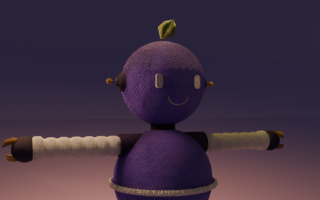3D technology has revolutionized many aspects of human life, from the way we work and learn to the way we interact with the world around us. Since its introduction, this technology has undergone a long journey of discovery and innovation, changing many industries. From art and design to manufacturing and medicine, 3D technology has now become an integral part of our lives.
This article traces the history of 3D technology, from its origins to its use in everyday life, which has had a major impact on many industries.
1. Early History of 3D Technology
1.1. The Emergence of 3D Technology in the Computer World
3D technology began in the 1960s when computer scientists began developing the ability to represent objects in three dimensions. One of the early pioneers was Ivan Sutherland, who developed “Sketchpad”, an interactive graphics system that allowed users to draw objects in three-dimensional space on a computer screen. Although very simple by today’s standards, it was an important first step in creating a modern 3D world.
1.2. Progress in the World of Film and Animation
In the late 1970s and early 1980s, 3D technology began to be used in film production. One of the first films to make extensive use of 3D visual effects was Star Wars (1977), which combined 3D elements with traditional techniques to create stunning effects. In 1995, Pixar’s Toy Story became the first fully animated film made entirely using 3D technology. He took animation to a higher level and paved the way for a new era in the film industry.
2. 3D Technology and Its Development in the World of Design
2.1. Introduction to CAD (Computer-Aided Design)
In the 1980s, the emergence of CAD (Computer Aided Design) software initiated the application of 3D technology in engineering design and manufacturing. CAD allows designers and engineers to create 3D models of products before producing them. CAD allows you to design components with high precision, test functionality, and make changes easily without creating a physical prototype.
2.2. Advances in 3D Modeling and Rendering
With advances in computer hardware and software, 3D modeling and rendering techniques have become increasingly sophisticated. During the 1990s and 2000s, 3D design software such as AutoCAD, Blender, and 3ds Max became increasingly popular among professional designers in a variety of industries, from architecture to product design. 3D rendering is now more realistic, allowing designers to create visualizations that closely resemble the real world.
3. 3D Printing: From Prototype to Mass Production
3.1. Early 3D Printing Technology
One of the biggest breakthroughs in 3D technology is 3D printing, which was first discovered by Chuck Hull in 1983. Hull had developed a stereolithography (SLA) technique that allows 3D objects to be printed layer by layer from a liquid material that hardens when exposed to ultraviolet light. This discovery led to 3D printing being used for the first time in the manufacturing industry to print prototypes.
3.2. The Evolution of 3D Printing and Commercial Applications
In the early 2000s, 3D printing began to be used more widely in various fields. Companies like Stratasys and 3D Systems are bringing cheaper commercial 3D printers to the market. In recent years, this technology has developed rapidly, enabling the printing of more complex and precise products from various materials such as metals, plastics and even biological materials. 3D printing is currently used in various industries, from automotive, fashion, healthcare, to architecture.
4. Application of 3D Technology in Everyday Life
4.1. Interior Design and Architecture
3D technology has revolutionized the world of interior design and architecture. 3D design software allows architects and interior designers to create 3D models of the rooms and buildings they build. This allows customers to visualize the space more accurately before work begins, minimizing unnecessary design changes and reducing costs.
Additionally, 3D printing has made it possible to create realistic miniature models of buildings for use in urban planning presentations and analysis. This technology also allows the creation of more complex and efficient structures containing environmentally friendly materials.
4.2. Consumer Products: 3D Printing at Home
In everyday life, 3D technology enters the home through 3D printing devices. With 3D printers becoming more affordable, consumers can now print a variety of objects at home, including toys, jewelry, household items, and even electronic components. These 3D printers allow people to create objects according to their needs, creating a trend towards personalized design.
4.3. Health: Customized Prosthetics and Medical Devices
3D technology has had a huge impact in the medical world. 3D printing allows the creation of prostheses that are tailored to the patient’s anatomy. This increases patient comfort and speeds up the production process of these medical devices. In addition, 3D design is also used to create medical implants such as artificial teeth and joints, which can be produced more precisely and quickly.
4.4. Education: Interactive Learning with 3D Models
Interactive Learning with 3D Models In education, 3D technology is used to make educational materials more interactive and interesting. 3D models allow students to visualize objects and concepts that are difficult to explain using only two-dimensional images. For example, 3D models of the human circulatory system or molecular structures can be used in biological and chemical research to provide a deeper and more realistic understanding.
5. The Future of 3D Technology: What to Expect?
5.1. 3D Printing in Biotechnology
One promising area for the development of 3D technology in the future is biotechnology. Bioprinting technology has been developed to print living tissue and human organs. Although bioprinting is still in its infancy, it has the potential to revolutionize the medical world and enable the printing of organs that can be used for transplantation.
5.2. Use of AR and VR in 3D Experiences
Augmented Reality (AR) and Virtual Reality (VR) technologies are increasingly developing and being integrated into 3D design. AR and VR devices allow users to experience more immersive 3D experiences, whether for entertainment, education or professional training purposes. This technology brings many new possibilities to the world of human-computer interaction and enables more immersive experiences in virtual worlds.
Conclusion
3D technology has developed rapidly from its inception to its application in everyday life. With continuous innovation, this technology is now changing many aspects of life, from design and manufacturing to health and education. Advances in 3D printing, AR, VR, and biotechnology show that the future of 3D technology will be even more amazing, bringing greater benefits, and increasingly penetrating every aspect of human life.
FAQ:
1. What is 3D technology?
3D technology refers to the creation of three-dimensional objects by using software and hardware to create models or products that can be moved, manipulated, and viewed in three-dimensional space.
2. When was 3D technology first discovered?
3D technology was first introduced in the 1960s by computer scientist Ivan Sutherland by creating the interactive graphics system “Sketchpad”.
3. What are the main benefits of 3D technology in the medical world?
3D technology is used in the medical world to create prosthetics and implants tailored to the patient’s anatomy, as well as for more accurate and efficient surgical planning.
4. How does 3D technology influence interior design?
3D technology allows interior designers to create virtual models of spaces, giving clients a better visualization of how a space will look, and aiding in more efficient planning.
5. What to expect from the future of 3D technology?
In the future, 3D technology is expected to further develop, with applications such as bioprinting of human organs and increasingly immersive interactive experiences using AR and VR.


